Poverty reduction requires long-term solutions

Events like the Covid pandemic and the Russia-Ukraine war are completely unexpected for developing economies like ours, and we are not prepared for such events in advance. As a result, these occurrences affect the economy in various ways, which leads to a risk of more people falling below the poverty line. Right after the Covid outbreak in 2020, the Centre for Policy Dialogue (CPD) put forward some assessments mentioning that poverty had risen. However, the latest Household Income and Expenditure Survey (HIES 2022) shows the proportion of the population below the poverty threshold to be 18.7 percent. At the time of the survey, the Russia-Ukraine war had just broken out. As it continued, it had an impact at the global level, which is why our import costs increased. Consequently, the availability and prices of essential food items, which are import-dependent, went up. That impact continued and resulted in high inflation, which reduced real income for people. So, it's not surprising that more people are at risk of falling below the poverty line.
We may not have the exact data on poverty right now, but it is likely increasing, and it is not unexpected. Over the past year, there has been persistent high inflation, limited job opportunities, slower growth in export-oriented industries and then, more recently, political instability. When we consider all these factors together, there is a significant risk of more people falling below the poverty line.
In terms of statistics, what we need is reliable data to understand whether more people have indeed fallen below the poverty line. The latest data from the Bangladesh Bureau of Statistics (BBS) is from 2022 and outdated; it shows that the proportion of population below the poverty line decreased to 18.7 percent (roughly 32 lakh) from 24.3 percent in 2016, which was an improvement. We know that the previous government tried to expand the coverage of social safety net programmes (SSNPs), despite some shortcomings and weaknesses. At least there has been a gradual expansion in areas like food aid, financial support, and increased work opportunities. Per the HIES 2022, about 37.6 percent of the population under the poverty line benefited from the SSNPs. So, that was a significant achievement during that time.
However, there were also complaints that many people who did not actually qualify for SSNPs were included due to their political connections while some eligible individuals were left out. Our own research showed that about one-third of the population enrolled in SSNPs weren't eligible, but they were included due to political favour or connection to the local ruling party leaders and administration. So, as poverty rises, expanding the social safety nets could be an initial step. But we also must remember that poverty has various dimensions and characteristics, so the same strategy may not work everywhere. For instance, poverty rates are higher in three particular regions—Barishal, Mymensingh and Rangpur—compared to the national average of 18.7 percent. In Barishal, it's nearly 26.9 percent, in Mymensingh 24.2 percent, and in Rangpur 24.7 percent. These poverty pockets need to be specifically addressed. Instead of distributing aid evenly across the entire country, the government should focus on these high-poverty districts where data is available, and implement targeted programmes.
Another observation is that poverty is more prevalent among the uneducated. So identifying less-educated populations in these poverty pockets could help address the issue. Providing one-time food aid is not enough for them; they need something more sustainable, such as job-related training or skills education, so they can access work opportunities throughout the year. Younger individuals, particularly those aged between 15 and 30 years, are also more likely to be poor because they lack experience, skills and market networks. Therefore, it's important to create work opportunities for this group and help them avoid unemployment.
In addition, there are various minority communities, vulnerable groups and people with disabilities who face societal discrimination and mistreatment, which also increases their risk of falling into poverty. Targeted initiatives for these groups are necessary as it is difficult to reach these populations solely through general SSNPs like financial aid or food support. Our previous research showed that even the allocations for these target populations were often insufficient, which means they receive only small amounts that don't meet their needs. If we truly want to sustainably lift them out of poverty, we need to provide them with access to employment, training and other such opportunities, while addressing the mistreatment they face in areas like education and healthcare. These systematic, long-term strategies should guide us in reducing poverty over time.
In terms of immediate relief, the government is already working within the existing structure, offering food assistance or employment programmes. The government has around 142 SSNPs, such as benefits for disabled individuals, lactating mothers, freedom fighters, and the elderly. However, these programmes have two major weaknesses: their coverage is limited, and the financial support provided is very small. For example, some programmes offer only Tk 500-600 per month, but if the price of rice is Tk 60 per kg, Tk 600 would only buy 10 kg of rice. For a family of four that consumes two kg per day, this rice would last just five days. This equation shows how inadequate the assistance is.
If the government wants to act immediately, they could expand the coverage and increase the allocations within the existing programmes, focusing on specific target populations like those in certain geographic areas or sectors of employment, such as agriculture or transport workers, where poverty rates are higher. However, the government faces a challenge because financial resources are limited and the food reserves are relatively low.
One strategy can be to reduce leakage in these programmes. A recent study showed that about 30 percent of resources allocated to social safety nets are lost due to inefficiencies or corruption. If this leakage can be addressed, these resources could be redistributed to reach more people.
Governments often tend to focus on immediate needs, which is understandable, but we also need to ensure that long-term poverty reduction efforts are being developed parallelly. This should be a priority for the government, and even interim or caretaker governments must keep long-term plans in mind while addressing immediate needs.
I hope that the committees currently working on poverty alleviation will provide guidance to the government on both short-term and long-term strategies. There is also a talk of wage policies and future planning, and the government is considering taking action in these areas. The committees working on these issues should incorporate both short-term relief and long-term solutions into their recommendations.
Dr Khondaker Golam Moazzem is research director at the Centre for Policy Dialogue (CPD). He can be reached at [email protected].
Views expressed in this article are the author's own.
Follow The Daily Star Opinion on Facebook for the latest opinions, commentaries and analyses by experts and professionals. To contribute your article or letter to The Daily Star Opinion, see our guidelines for submission.

 For all latest news, follow The Daily Star's Google News channel.
For all latest news, follow The Daily Star's Google News channel. 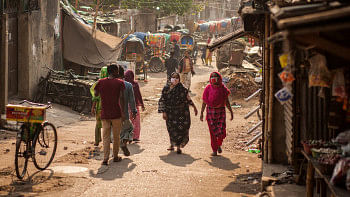
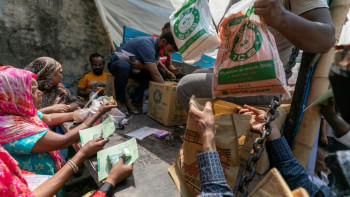
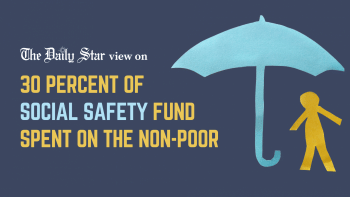
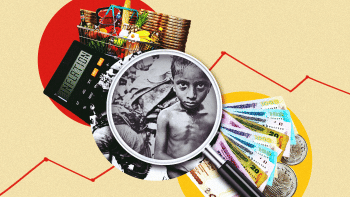






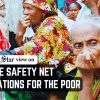


Comments